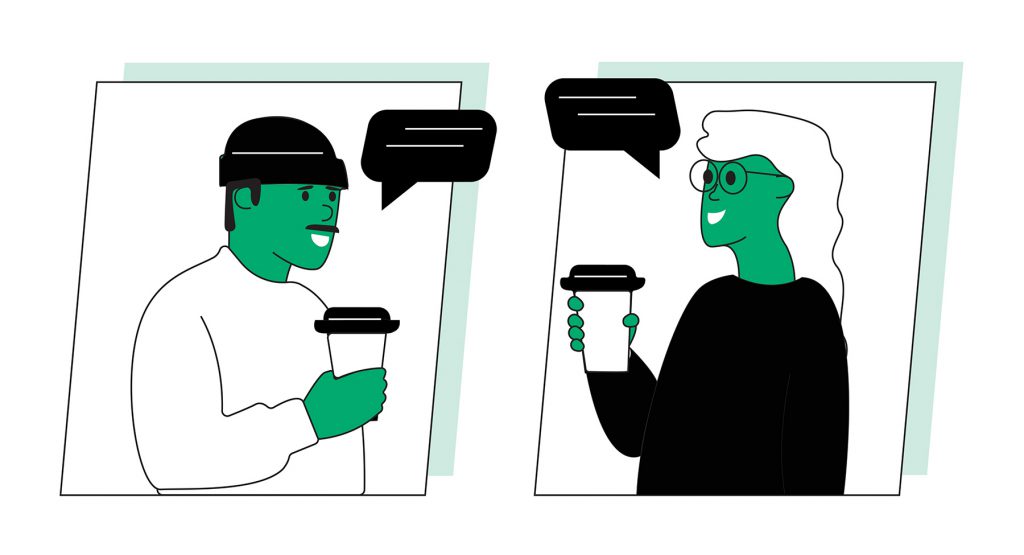One of the things we at Grand Studio love the most is a good problem to solve. The most interesting problems for us are the elusive ambiguous and complex problems that are packed with the most uncertainty. Indeed, the more challenging the problem, the more rewarding it becomes to solve it.
Keeping our clients confident as we move through the rough and tumble of the uncertain problem space and delicately into the solution space, in a way that brings delight, is a part of what makes our jobs interesting as consultants.
Uncertainty can creep into a project at any time, like a heavy fog resting over a vast valley. Thankfully, we’ve found there are often some common questions that, once answered, can clear the fog and get us all seeing the path clearly again.
What problem are we trying to solve?
Understanding project goals probably sounds obvious, but this becomes more important especially as new stakeholders enter a project. When there’s uncertainty about what we’re doing and why, the purpose of a design engagement can become totally lost.
Something that works well for us is a conceptual model that can morph through a project. Basically, some model that’s understandable enough for anyone to grasp with a little voice-over so it can bridge any information gaps related to goals and scope.
Another alignment exercise is going through the process of creating strategic principles for a project. These high-level principles are often used to help stakeholders and designers align on what a product should do to satisfy business and user needs. If you and your stakeholders can agree on these, then you can reference them in the future to inform your design decisions.
Goals, scope, and principles might shift (hopefully not too dramatically), but at least you will have this tool in your back pocket to help communicate what they are and why.
What do we know, or not know?
It’s good to identify early on in a project what information you have and what information you need. A lack of information can lead to a situation where you have more questions or assumptions than answers; moments like these can feel overwhelming and can cause unnecessary uncertainty for everyone.
Set time with stakeholders to transfer knowledge and better understand the problem space, identify the questions you still have, and how you plan to answer them. You will probably find that your stakeholders will have their own questions that they wish to have answered as well!
Maintain an inventory of any lingering questions that you have. Over time, you can use these questions to keep a pulse on what you still need to learn. Document answers to those questions, along with any follow-up questions you might have. The more questions you can find answers to, the better.

Who do we need to speak with?
Uncertainty runs rampant when we have a lack of information (or worse, misinformation), and there is often a vault of knowledge that someone somewhere has is in their heads, or in a document. Part of a design consultant’s role is facilitating the conversations that need to happen to make that information available.
Interviews with users, experts, or other stakeholders are great ways to gather information and answer questions. In some scenarios, a workshop can be an interactive way to tease out information. We’ve also found that some interviewees respond well to an email or survey with a generic list of questions. A lot of it depends on whom you are speaking to and the nature of the information you need.
Invite stakeholders along for the ride when you are seeking out information, and give them space to ask questions of their own. Giving them space to contribute to the final design of a project can help them feel valued and invested in a solution. If stakeholders cannot participate, regular share-out reports are great ways to keep folks informed about who we have spoken with and what we have learned, and how these findings impact our designs.
When should we discuss _ ?
Communication is the secret sauce that ties all of this together~ too much of it might inhibit your teams ability to make progress, or worse, annoy the heck out of your stakeholders. Too little communication might make your stakeholders feel uncomfortable, uncertain, or out of the loop. Setting expectations and working relationships early on can help facilitate this balance.
Uncertainty can creep in really fast when there’s a lack of communication, or poor communication. No communication at all can be really damaging to a relationship. A stakeholder might urgently want to discuss something- perhaps a big change at their organization, a change in requirements, or a new strategic initiative- so opening up space for those conversations is important to making sure everyone is on the same page.
Stay flexible, and remain transparent about what communication styles are working or not working, and tinker accordingly.
How should we deal with change?
At some point during a project you might find that the goals have changed, you have new stakeholders, your requirements have changed, or your communication cadence is no longer working. More often than not, change becomes associated with uncertainty.
Things will change during a project and being flexible enough to adapt to those changes with the right strategy is a big part of successful consulting. Be transparent with your stakeholders about what changes have been made that might effect the project objectives and scope. Have fun with change and find ways to spin it into new opportunities.
Have fun!
The final piece of advice I can give for design consultants is to have fun. Make your relationship with your client a partnership–keep it collaborative, interactive, and ask questions. Make spending time with your team the highlight of their week!
